Thursday, February 24th 2011

Thunderbolt Technology: The Fastest Data Connection to Your PC Just Arrived
Intel Corporation today announced the availability of Thunderbolt technology, a new high-speed PC connection technology that brings together high-speed data transfer and high-definition (HD) display on to a single cable. Running at 10 Gbps, Thunderbolt technology can transfer a full-length HD movie in less than 30 seconds. This Intel-developed technology is coming to market through a technical collaboration with Apple, and is available first on Apple's new line of MacBook Pro laptop computers.
The vision for Thunderbolt technology (formerly codenamed "Light Peak") is to move media faster, simplify connections between devices, and foster new and exciting ways to build and use PCs. Combining high-speed data and HD video connections together onto a single cable is instrumental to achieving that vision. Thunderbolt technology delivers this via two communications methods, or protocols -- PCI Express for data transfer and DisplayPort for displays.PCI Express has the flexibility to connect to almost any type of device, and DisplayPort can drive greater than 1080p resolution displays and up to eight channels of audio simultaneously. Thunderbolt technology is compatible with existing DisplayPort displays and adapters. All Thunderbolt technology devices share a common connector, and let individuals simply daisy-chain their devices one after another, connected by electrical or optical cables.
Thunderbolt technology is designed to meet the demands of serious HD media creators. For example, videographers can unleash their creativity using high-bandwidth audio and video capture/mixing devices, and get both low latency and highly-accurate time synchronization for real-time processing. At 10Gbps, larger media files are transferred faster so there's less time spent waiting to watch and edit videos. Data can be backed up and restored quicker, so there's less waiting for archived content. For mobile PC users, it means having a single connector on their ultra-thin laptop that extends their high-speed media and HD display capabilities at home or in the office. Thunderbolt technology is complementary to other I/O technologies that Intel continues to support."Working with HD media is one of the most demanding things people do with their PCs," said Mooly Eden, general manager, PC Client Group, Intel. "With Thunderbolt technology, Intel has delivered innovative technology to help professionals and consumers work faster and more easily with their growing collection of media content, from music to HD movies. We've taken the vision of simple, fast transfer of content between PCs and devices, and made it a reality."
"We're thrilled to collaborate with Intel to bring the groundbreaking Thunderbolt technology to Mac users," said Bob Mansfield, Apple's senior vice president of Mac Hardware Engineering. "With ultra-fast transfer speeds, support for high-resolution displays and compatibility with existing I/O technologies, Thunderbolt is a breakthrough for the entire industry and we think developers are going to have a blast with it."
Thunderbolt technology is powered by an Intel controller chip, and uses a small connector suitable for mobile devices that will be included in products supporting the technology. Several innovative companies have announced Thunderbolt technology-based products, or currently plan to support Thunderbolt technology in upcoming products, including Aja, Apogee, Avid, Blackmagic, LaCie, Promise, and Western Digital. Intel is working with the industry on a range of Thunderbolt technology-enabled products including computers, displays, storage devices, audio/video devices, cameras, docking stations and more.
The vision for Thunderbolt technology (formerly codenamed "Light Peak") is to move media faster, simplify connections between devices, and foster new and exciting ways to build and use PCs. Combining high-speed data and HD video connections together onto a single cable is instrumental to achieving that vision. Thunderbolt technology delivers this via two communications methods, or protocols -- PCI Express for data transfer and DisplayPort for displays.PCI Express has the flexibility to connect to almost any type of device, and DisplayPort can drive greater than 1080p resolution displays and up to eight channels of audio simultaneously. Thunderbolt technology is compatible with existing DisplayPort displays and adapters. All Thunderbolt technology devices share a common connector, and let individuals simply daisy-chain their devices one after another, connected by electrical or optical cables.
Thunderbolt technology is designed to meet the demands of serious HD media creators. For example, videographers can unleash their creativity using high-bandwidth audio and video capture/mixing devices, and get both low latency and highly-accurate time synchronization for real-time processing. At 10Gbps, larger media files are transferred faster so there's less time spent waiting to watch and edit videos. Data can be backed up and restored quicker, so there's less waiting for archived content. For mobile PC users, it means having a single connector on their ultra-thin laptop that extends their high-speed media and HD display capabilities at home or in the office. Thunderbolt technology is complementary to other I/O technologies that Intel continues to support."Working with HD media is one of the most demanding things people do with their PCs," said Mooly Eden, general manager, PC Client Group, Intel. "With Thunderbolt technology, Intel has delivered innovative technology to help professionals and consumers work faster and more easily with their growing collection of media content, from music to HD movies. We've taken the vision of simple, fast transfer of content between PCs and devices, and made it a reality."
"We're thrilled to collaborate with Intel to bring the groundbreaking Thunderbolt technology to Mac users," said Bob Mansfield, Apple's senior vice president of Mac Hardware Engineering. "With ultra-fast transfer speeds, support for high-resolution displays and compatibility with existing I/O technologies, Thunderbolt is a breakthrough for the entire industry and we think developers are going to have a blast with it."
Thunderbolt technology is powered by an Intel controller chip, and uses a small connector suitable for mobile devices that will be included in products supporting the technology. Several innovative companies have announced Thunderbolt technology-based products, or currently plan to support Thunderbolt technology in upcoming products, including Aja, Apogee, Avid, Blackmagic, LaCie, Promise, and Western Digital. Intel is working with the industry on a range of Thunderbolt technology-enabled products including computers, displays, storage devices, audio/video devices, cameras, docking stations and more.
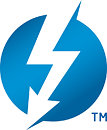
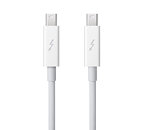
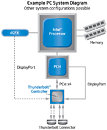
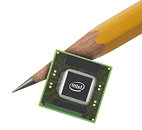
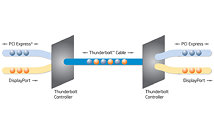
76 Comments on Thunderbolt Technology: The Fastest Data Connection to Your PC Just Arrived
amen!
www.engadget.com/2011/02/24/intel-refutes-apple-exclusivity-for-thunderbolt-i-o-lacie-and-p/
apple has a head start but other OEMs can go ahead and start launching their own.
ridiculouse too that mobo makers know us and will use valuable pciex lanes to give us usb3 support , culling the prospective greatness of any intel chipset board not good they should have implemented onchip usb3 AND light bolt peak thunderbird multi connector thats just 1????? not rant over
should push a few more AMD's way tho
do you think well get to a point where storage speed dosnt really matter because for my needs at the min sata 3 plus an pciex ssd works well enough
Would you say that Ford is a failure because they didn't have the US auto sales that Toyota had last year?
Any way, I hope "Bulldozer" bulldozes Intel's face in and gets some serious competition going again.
PS-Im kinda drunk. :toast:
IDE was going nowhere in terms of bandwidth. It had a large, outdated, annoying data connector and required an entire 4-pin molex for half an amp of power.
This isn't IDE to SATA.
This is SATA 1.5Gbps vs SATA 3.0Gbps.
And I specifically don't compare between SATA 3.0Gbps and SATA 6.0Gbps, because back then no one had a single HDD that topped 187MB/s read/write, and now, I seriously, seriously doubt that anyone would care that they're only getting 600MB/s via an external connector.
There should only be ONE port for external devices.
We need to have one connector that has latency of SATA, the bandwidth of Thunderbolt, and the longevity of the horrendous serial port.
Instead of creating Thunderbolt, Intel should have just made USB faster.
Btw,
As of right now, you'd to be a cable-phobe or have a self-built 1TB SSD in an external enclosure that supports Thunderbolt (which may or may not come out), to gain ANYTHING over USB 3.0.
PVT, they way it is, you connect your printer to your PC, then KB to your printer, and mouse to your KB. Works out fine, no? :p
summer (american summer, ofc) 2011
light peak aint far off.
sorry, 'thunderbolt' (crap name)
We're going from USB to.. Thunderbolt. Unbelievable.
look at it this way: you could have your PC 30 meters away, run a cable through the wall cavitys and have audio, video, input (mouse/KB), network and data connections) all via the one cable.